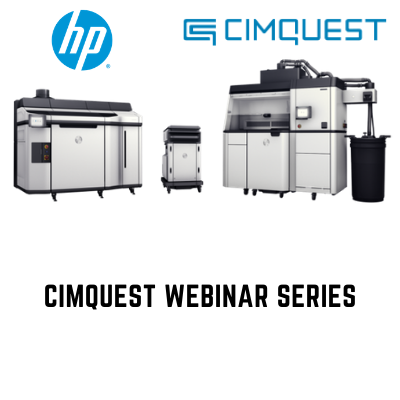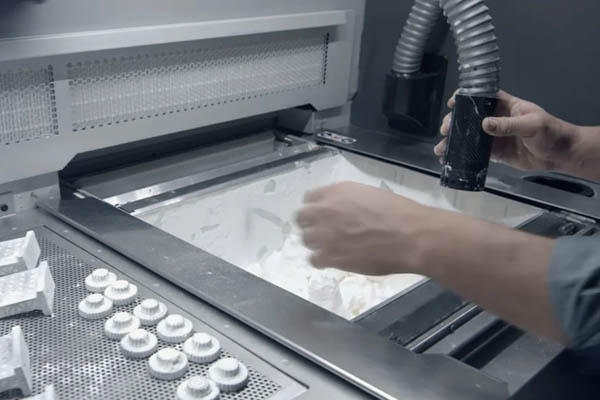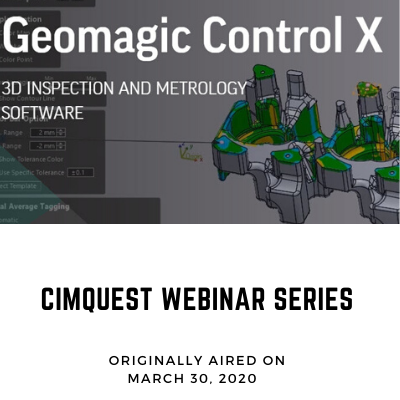HP DaaS (Device as a Service) Program
HP DaaS (Device as a Service) Program Cimquest will discuss the new HP DaaS (Device as a Service) Program which gives you access to industrial-level 3D printing at lower up-front investment. Gain new levels of cost predictability with the flexibility to scale your business as you grow. https://cimquesttv.wistia.com/medias/a4ve3q8rmb?embedType=async&videoFoam=true&videoWidth=640
Nexa3D 3D Printing Material Options
There are many 3D printing material options currently available for the Nexa3D NXE 400. Nexa3D’s Ultra-Fast solution is a game-changer for engineers looking to boost their speed and throughput. With the ability to print 1 vertical inch every 2¹/2 minutes, the NXE 400 is ideal at producing large models or high volumes of parts in quick-turn fashion on a consistent basis. Let’s take a look at the material options that are currently available. The first material is a functional ABS-like material which is great for injection molding molds. It offers low shrinkage and stronger durability that is ideal for gauges and fixtures. It is also primed for plating or painting and renders finely crafted details. The next material is a tough translucent option. It has no water uptake with high accuracy, ideal for performance prototypes and functional end-use parts. The material is also a great fit for air ducts, fluid flow models, and snap fits. Gray material offers high details and an excellent surface finish. It can be used for rapid iterations of prototypes, form fit and functional analysis. Additionally, it is effective for demonstration and communication, topology optimization studies and more. It features industrial-grade durability and assembly. The final current offering is [...]
Cleaning HP Parts
HP Multijet Fusion technology is known for its high-quality parts with near isotropic qualities and performance. The advances offered by Multi Jet Fusion can add up to major advantages, including: Better mechanical performance Significant cost savings with batch manufacturing Accelerated time to market with faster build speeds On the back end of getting such great parts, there is post-processing that needs to be done. Whether support removal, sanding, bead blasting or bathing it needs to be done on any 3D printed part. With HP MJF technology, there is no support to remove but there is a powder residue. We can remove it manually or automated. Powder removal is a mandatory post-processing procedure in the HP MJF 3D Printing workflow. It is done in order to get rid of the remaining powder attached to the part after removal from the cake. It is necessary as part of the cleaning process after printing. Workflow To remove this excess of powder, bead blasting is necessary. After the job is finished, the parts are “unpacked” and removed from the build chamber then brought to a bead-blasting machine. Even though most of the powder is removed from the surface, a thin layer of material will often remain attached [...]
Desktop Metal 3D Printing Services Aid in COVID-19 Pandemic
by Jillian Crocker, Administrative Assistant In the midst of a pandemic, hospitals and medical facilities have felt a huge impact as many have exhausted their medical supplies. Many are searching for strategies and others available to help. Many facilities are working incredibly hard to create essential equipment to aid in the fight and eradication of the spread of COVID-19. To aid in the cause, Desktop Metal is offering its services to medical equipment manufacturers and those making “critical medical parts.” They are opening up access to their technology resources and providing free 3D printing services. The desired part must meet the guidelines put in place by Desktop Metal and deemed an “urgent need in the medical community.” Part Guidelines by Desktop Metal Desktop Metal systems work best with small, complex metal parts. Please follow the guidelines below for parts that are needed. Part must be able to be used in 17-4 Stainless Steel Part size should be smaller than 2cm x 2cm x 2cm - When requesting the part needed, you must fill out this form and answer the following questions: Explain what the part is and what it is used for. The quantity needed. Does this part meet the specifications and Part [...]
Non-Contact inspection – Webinars on Demand
Non-Contact inspection: Review scanner specs for accuracy and resolution parameters. • Import the nominal CAD model and scan into Control X. • Discuss batch processing many scans, unmanned. • Discuss how Product Manufacturing Information (PMI) may be used to automate the complete process by integrating with your CAD system. https://cimquesttv.wistia.com/medias/ltcs92zoqo?embedType=async&videoFoam=true&videoWidth=640
Non-Contact inspection – Webinars on Demand
Non-Contact inspection - Webinars on Demand Comparing the scan of a manufactured part with its nominal CAD model. • Review scanner specs for accuracy and resolution parameters. • Import the nominal CAD model and scan into Control X. a. Duplicate the CAD datums on the scan and perform a datum alignment. b. Once aligned, produce color maps, whisker plots, 2D and 3D dimensions, GD&T and a final inspection report. • Discuss batch processing many scans, unmanned. • Discuss how Product Manufacturing Information (PMI) may be used to automate the complete process by integrating with your CAD system. https://cimquesttv.wistia.com/medias/ltcs92zoqo?embedType=async&videoFoam=true&videoWidth=640







